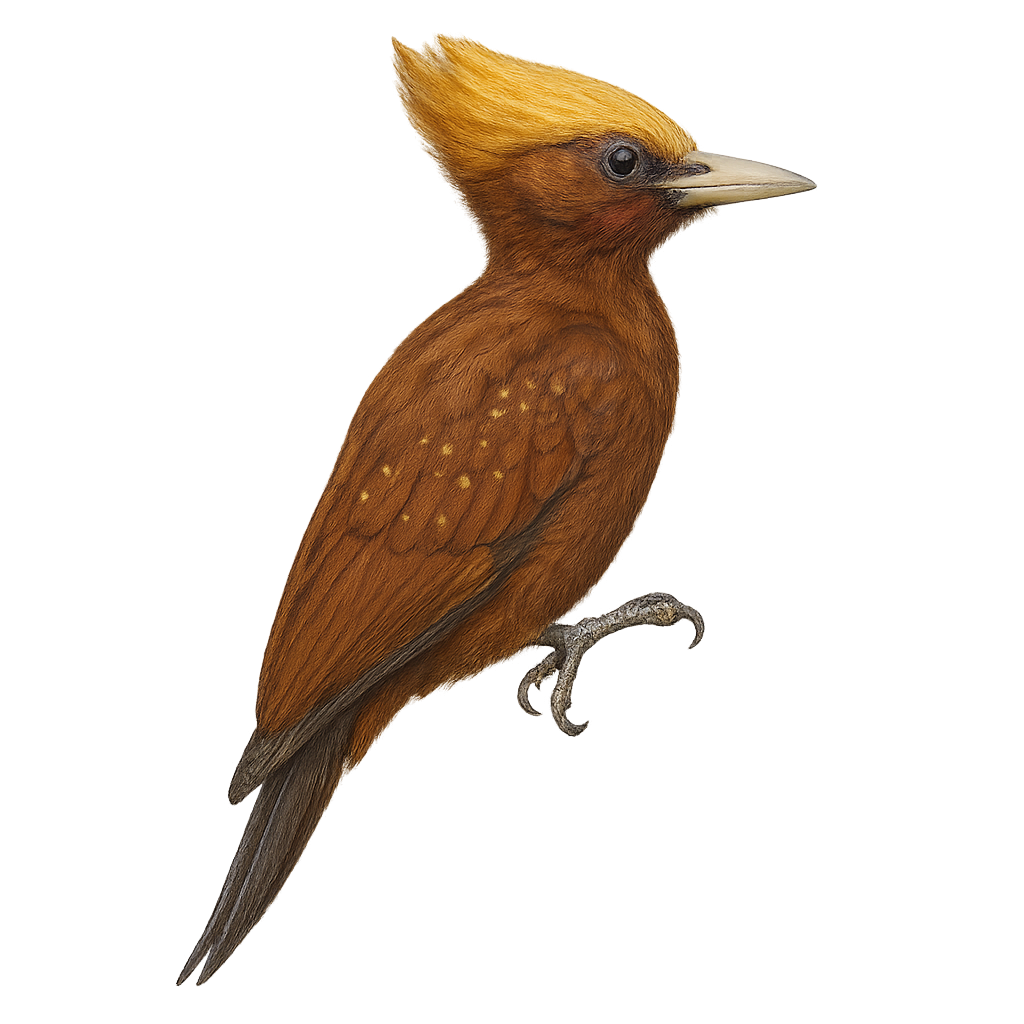Your wildlife photography guide.
Explore the chestnut woodpecker in detail, study its behavior, prepare your shots.
Where to observe and photograph the chestnut woodpecker in the wild
Learn where and when to spot the chestnut woodpecker in the wild, how to identify the species based on distinctive features, and what natural environments it inhabits. The WildlifePhotographer app offers tailored photography tips that reflect the chestnut woodpecker’s behavior, helping you capture better wildlife images. Explore the full species profile for key information including description, habitat, active periods, and approach techniques.
Chestnut Woodpecker
Scientific name: Celeus elegans

IUCN Status: Least Concern
Family: PICIDAE
Group: Birds
Sensitivity to human approach: Suspicious
Minimum approach distance: 10 m
Courtship display: February to March
Incubation: 15-17 jours
Hatchings: February to April
Habitat:
Tropical forests, rainforests, wooded areas
Activity period :
Primarily active during the day, with peak activity in the morning and late afternoon.
Identification and description:
The Chestnut Woodpecker, or Celeus elegans, is a captivating bird native to the tropical forests of South America. It is characterized by its striking reddish-brown plumage and distinctive crest. Its medium size and sturdy beak allow it to bore into wood to find its food, mainly consisting of insects and larvae. Often seen in pairs or small groups, it moves nimbly through the dense canopy. Although its habitat is threatened by deforestation, the Chestnut Woodpecker remains relatively common in some areas. Its call is a mix of sharp cries and drumming on tree trunks, making it easily noticeable to keen observers.
Recommended lens:
400 mm – adjust based on distance, desired framing (portrait or habitat), and approach conditions.
Photography tips:
To photograph the Chestnut Woodpecker, it is advisable to use a telephoto lens of at least 400mm to capture precise details without disturbing the bird. Look for areas where trees are dense, as these birds prefer thick canopies. Be patient and attentive to drumming sounds that may indicate their presence. The natural light of the morning or afternoon is ideal to highlight the vibrant colors of their plumage.
The WildlifePhotographer App is coming soon!
Be the first to explore the best nature spots, track rutting seasons, log your observations, and observe more wildlife.
Already 1 430 wildlife lovers subscribed worldwide

